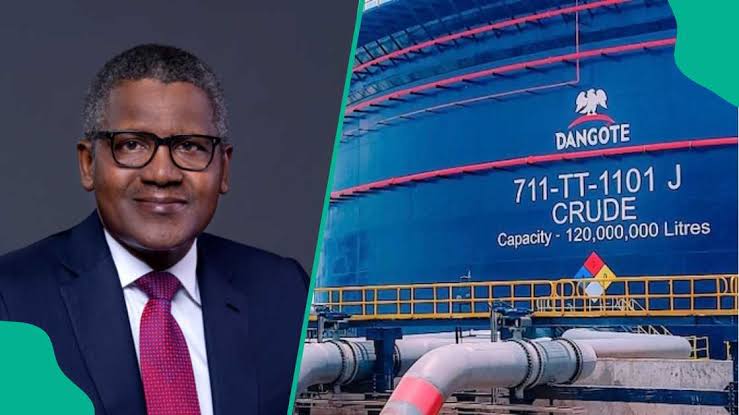
Raphael Kanu
The Dangote Petroleum Refinery has dismissed reports that its petrol production unit could be shut down for up to three months.
A Reuters report, quoting industry monitor IIR Energy, had claimed that the 650,000 barrels-per-day refinery’s Residue Fluidised Catalytic Cracking Unit (RFCCU) was shut around August 29 due to catalyst leaks. It suggested that while a restart attempt was planned for September 20, major repairs could keep the unit offline for months.
However, Dangote Group’s spokesman, Anthony Chiejina, strongly refuted the claims, describing them as “fake news.”
“Fake news. Why ‘could’ if they are sure?” Chiejina said on Sunday, questioning the reliability of the report.
The refinery, which began processing crude in January 2024, has already altered global fuel flows. According to Kpler data, the European Union and the United Kingdom’s gasoline exports to Nigeria fell from about 200,000 barrels per day in 2024 to around 120,000 bpd in the first half of 2025.
The facility has also exported two cargoes of petrol to the United States East Coast—marking a milestone as industry observers track whether the plant can consistently produce fuel meeting US standards.
Dangote Refinery plans to ramp up production to 700,000 bpd by December 2025. In August, it imported Ghana’s Sankofa crude for the first time, a medium-sweet grade heavier than its usual light-sweet crude intake. It has also sourced Brazilian and Angolan grades such as Mero, Tupi, and Pazflor.
The refinery has struggled with adequate local crude supply. Petroleum Minister of State (Oil), Heineken Lokpobiri, recently admitted that Nigeria must boost production to meet both domestic and international demands.
Kpler data shows crude deliveries to Dangote hit a record 570,000 bpd in July—60% of which came from US light-sweet crude, while Nigerian grades made up 40%. For the first time, US supplies overtook Nigerian barrels in Dangote’s import mix due to cost competitiveness and domestic shortages.
“Current operations are estimated at about 445,000 bpd, representing 68% of total capacity,” Kpler reported, adding that throughput is expected to remain stable, with a possible dip to 400,000 bpd during December–January maintenance.
